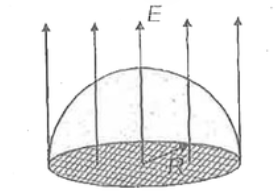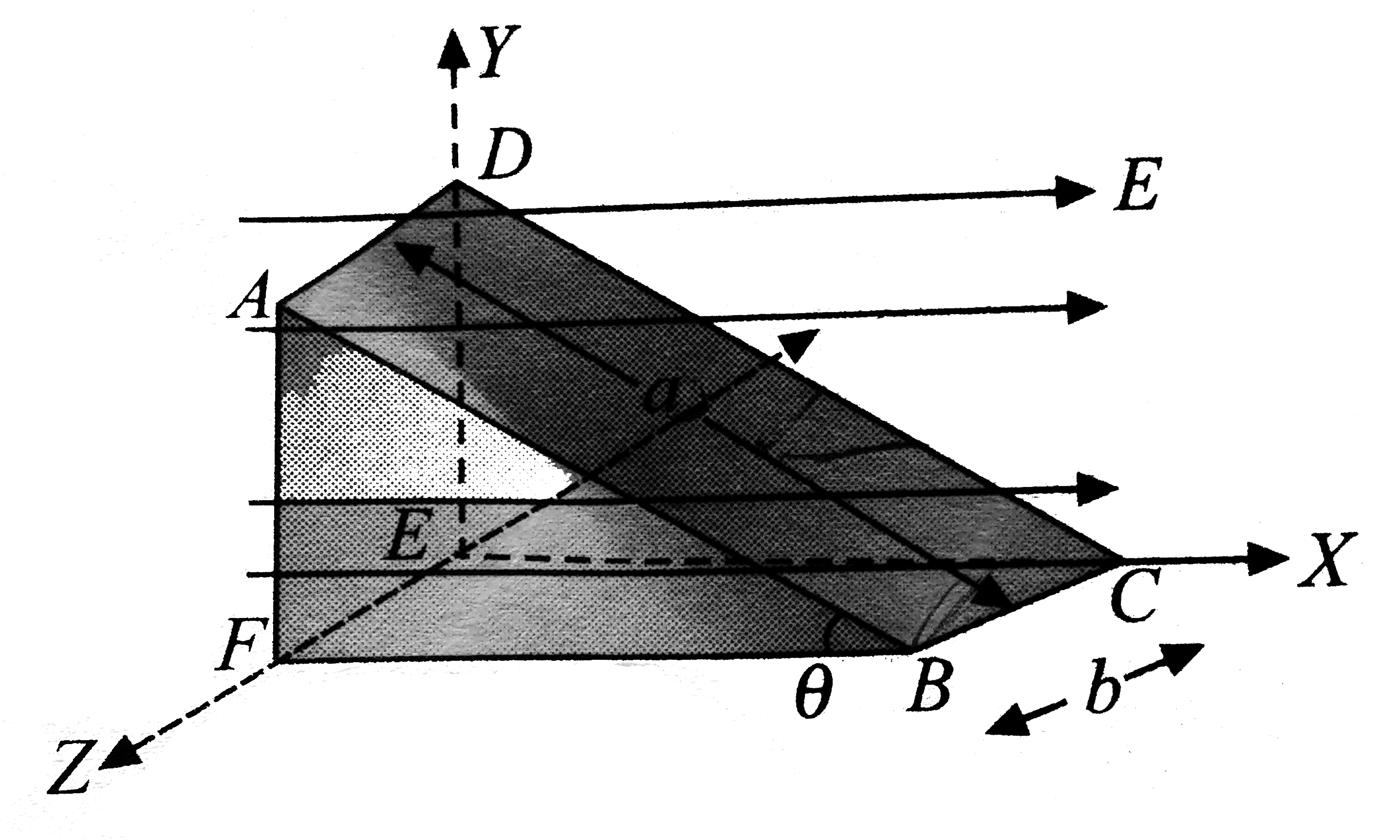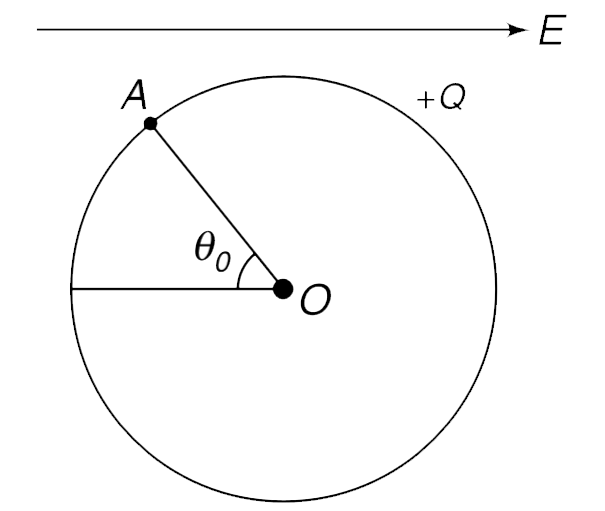A solid conducting sphere of radius R is placed in a uniform electric field E as showo in figure. Due to electric field non uniform surface charges are induced on the surface of the sphere. Consider a point A on the surface of sphere at a polar angle θ from the direction of electric field as shown in figure. Find the surface density of induced charges at point A in terms of electric field and polar angle θ : lt brgt 
The correct Answer is:[3∈0Ecosθ]
Topper's Solved these Questions
- ELECTROSTATICSBOOK - PHYSICS GALAXY - ASHISH ARORACHAPTER - ELECTROSTATICSEXERCISE - Advance MCQs
40 Videos
- ELECTROMAGNETIC INDUCTION AND ALTERNATING CURRENTBOOK - PHYSICS GALAXY - ASHISH ARORACHAPTER - ELECTROMAGNETIC INDUCTION AND ALTERNATING CURRENTEXERCISE - Advance MCQs
33 Videos
- GEOMETRICAL OPTICSBOOK - PHYSICS GALAXY - ASHISH ARORACHAPTER - GEOMETRICAL OPTICSEXERCISE - Unsolved Numerical Problems
107 Videos
Similar Questions
A hemispherical surface of radius R is kept in a uniform electric field E as shown in figure. The flux through the curved surface is

View SolutionAn uncharged metallic solid sphere of radius R is placed at a distance 2R from point charge Q as shown in figure. The electric field intensity due to induced charge at centre of sphere is
View Solution
Knowledge Check
There is a solid non-conducting sphere of radius R. Sphere is uniformly charged over the volume. Electric field due to this where in observed.
AElectric field intensity at the centre of sphere can never be non-zero.BMagnitude of electric field intensity at a point inside the sphere is directly proportional to the distance of the point from centre of sphere.CMagnitude of electric field intensity is directly proportional to 1r2 for points outside the sphere where r is the distance of point from the centre of sphereDMagnitude of electric field intensity at any point is less than its magnitude on sphere's surface.In going from the surface of a charged conducting sphere towards the centre of the sphere the electric field
AincreasesBdecreasesCremains the same as on the surfaceDremains zero at every placeA non-conducting solid sphere of radius R is uniformly charged. The magnitude of the electric filed due to the sphere at a distance r from its centre
AIncreases as r increases inside the sphereBDecreases as r increases inside as well as outsideCIncreases as increases outside the sphereDIs discontinuousat r=R
Find out the flux through the curved surface of a hemisphere of radius R if it is placed in a uniform electric field E as shown in figure

View SolutionFind out the flux through the curved surface of a hemisphere of radius R if it is placed in a uniform electric field E as shown in figure

View SolutionWhen an uncharged conducting ball of radius R is placed in an external uniform electric field, a surface charge densityh σ=σ0cosθ is induced on the ball's surface charge (here σ0 is a constant, θ is a polar angle). Find the magnitude of the resultant electric force acting on an induced charge of the same sign.
View SolutionA conducting sphere of radius R having charge Q is placed in a uniform external field E. O is the centre of the sphere and A is a point on the sphere of the sphere such that AO makes an angle of θ0=60∘ with the opposite direction fo external field. calculate the potential at point A due to charge on the sphere only.

View SolutionFind the electric field at the center of the sphere due to the induced charges on the surface of the sphere, as shown in Fig. 22-30.

View Solution
